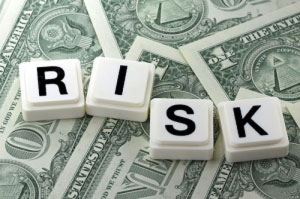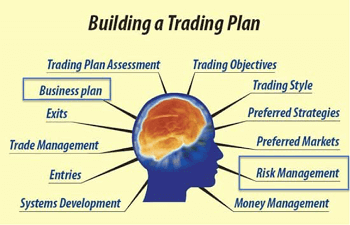It's been a rough year so far.
And last Wednesday was no better, with the Dow dropping by as much as 500 points at times.
Last Tuesday, we talked about why selling everything might not be the best idea.
We also talked about how researching, planning, and executing your plan perfectly is key to finding moneymaking trades, no matter how the markets are performing.
But what if you're doing everything you're supposed to - and things still go wrong?
Well there's something I left out on Tuesday that answers this question.
It's something all successful traders have and use before making any trade - including myself.
I'm talking about a risk management plan.
And it will be your guide to profits, even when it seems like everything is working against you.
A Good Risk Management Plan Will Tell You When to Make Your Next Big Move
 While I was in college, I worked in retail.
While I was in college, I worked in retail.
During this time, one of the most valuable business lessons I learned was how to account for losses, or "shrinkage," as they call it.
In any business, there's no way that you can expect everything to go 100% your way and never suffer a loss of some sorts.
This is where a risk management plan comes in...
A risk management plan - a good one - tells you when it's time to change your existing plans and what your new plan should be.
Financial firms and professionals have risk models in place. And with these, they're able to see and anticipate losses. But more importantly, they have plans in place for when shrinkage (loss) happens.
So instead of selling everything, as the Royal Bank of Scotland (RBS) advised, many institutions are using their risk management plans to determine how much risk they have taken and if that risk calls for them to sell and take some losses, dollar-cost average into certain stocks, or find a new place to invest their capital.
And this is exactly what I look at when it comes to my business of trading options.
I have to account for the fact that losses will happen because nothing is 100% guaranteed. Take my Money Calendar tool, for example. It uses historical data to show which stocks have made positive or negative moves 100% of the time over the past 10 years. But even Money Calendar can't guarantee that it will work again on the next trade.
So it's important to realize that times like these are possible and will happen occasionally. I know losses will happen - this is why I favor options.
In fact, you're risking about 90% less than investors are on their positions. Just look at stock and mutual fund investors - they're taking a beating right now.
But as an options trader, you can take comfort in knowing that a string of losses will not wipe out your account - as long as you have a risk management plan in place. And as long as you adhere to it, you can survive the rough times and thrive over time.
Now let's take a look at something I show students in my online options training courses when we talking about building a plan for options trading...

As you can see, trade management and money management are a part of risk management and dealing with losses or drawdowns.
Here's an example of a risk management model:
As my students know, I like to start by showing hypothetical trade ideas based on someone who has $25,000 in his or her account. The trade ideas we work through are based on risking no more than 2% of that account on any one trade.
So if we are calculating the risk amount for someone who has a $25,000 account, we come out to a total risk amount of $500 (2% of $25,000 = $500). This means one of two things:
- The trader can spend no more than $500 on a trade and will risk 100% of that amount, OR
- The trader can spend no more than $1,000 on a trade but will need to adhere to a 50% stop loss to ensure risking no more than $500.
When I ask my students what their preferred choices are, most opt for the first one.
The point of all of this is to illustrate the potential risk you face on each trade. And to know the risk, you need a plan that accounts for losses.
Without one, you won't know when something isn't working and when things are about to go horribly wrong. And you won't know it's time to find a new opportunity.
So before you make your next move, create a risk management plan that works for you. You can get help with this from whatever financial professional you trust.
And if the market turmoil worsens, you'll be ready.
Follow Money Morning on Facebook and Twitter.
Mark Your Calendar for Oil Profits: Oil's down, but there's still money to be made in the sector. In fact, this seasonal oil and energy pattern has unlocked the potential for nice profits even with cheap oil - and the next window of opportunity opens in February...
About the Author
Tom Gentile, options trading specialist for Money Map Press, is widely known as America's No. 1 Pattern Trader thanks to his nearly 30 years of experience spotting lucrative patterns in options trading. Tom has taught over 300,000 traders his option trading secrets in a variety of settings, including seminars and workshops. He's also a bestselling author of eight books and training courses.



